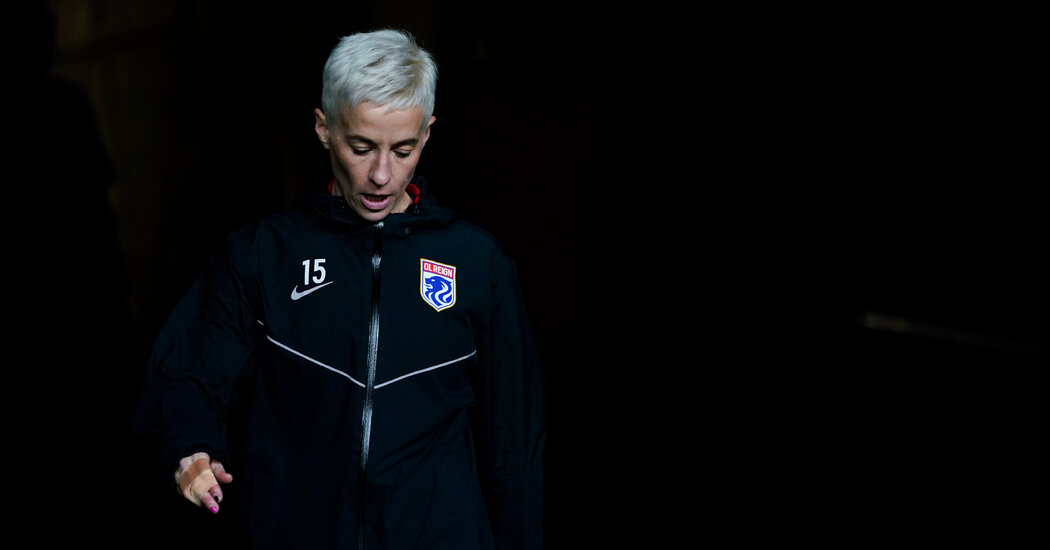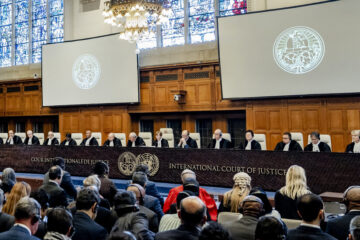[ad_1]
Emma Hayes first met Megan Rapinoe before she was Megan Rapinoe. Or, rather, just as she was becoming Megan Rapinoe. She was not yet a winner of two World Cups, not yet an Olympic champion, not yet captain of her country, not yet a powerful and urgent voice away from the field. Rapinoe was not even a professional soccer player back then, not quite.
Hayes’s job was to change that. In 2008, she had been appointed head coach and director of soccer operations of the Chicago Red Stars, one of the inaugural franchises in the start-up league Women’s Professional Soccer. Hayes had a blank slate to fill, a team to construct from scratch. Rapinoe was her first call.
That, perhaps, is the best measure of how brightly Rapinoe’s talent shone. When coach and player first met, Rapinoe was just a 23-year-old straight out of the University of Portland, but the power dynamic already lay in her favor. She did not need to convince Hayes. Instead, Hayes had to sell her on the team, on the project, on the city.
And so she showed Rapinoe, born and raised in California, around Chicago, hoping to persuade her that the move to the banks of Lake Michigan would suit her. It worked. The Red Stars drafted Rapinoe second overall ahead of the league’s first season.
The W.P.S. did not last. It survived for just three seasons. By the time it closed down, Hayes had long since departed the Red Stars. Rapinoe, though, was just getting started.
As much as Hayes was convinced of Rapinoe’s promise, even she would not pretend to have known just how far she would go. This weekend, Rapinoe — 38 now — will finally call time on her career. Her plan is for her exit to be framed by ticker-tape and fireworks: with one last triumph, helping OL Reign to claim victory against Gotham F.C. in the N.W.S.L final, a suitably glorious coda to a glittering career.
It is no exaggeration to say that, for more than a decade, Rapinoe has been the defining player in women’s soccer. It is not simply that she was a key part in the United States’ victory in the 2015 World Cup, and the driving force behind its repeat triumph four years later. It is that her activism, her unwillingness to shut up and play, turned the U.S. women’s team into something that transcended sports. As a consequence, she helped set the tone for women’s soccer as a whole.
It is fitting that Rapinoe’s curtain call should come just as Hayes, the woman who did so much to launch her career, should return to the United States. Not officially, of course; at this stage, the fact that Hayes will be the next coach of the U.S. women’s team is merely an open secret, a fait accompli that must — for now — remain swaddled by a warm blanket of euphemism.
Anonymous sources will go only as far as saying Hayes and U.S. Soccer have been “in talks.” Chelsea, the club Hayes has coached for the last decade to considerable success, will only say that the 47-year-old coach will depart at the end of the current season in order to “pursue a new opportunity” outside of England’s Women’s Super League and the club game. Quite what that opportunity might be is not revealed. Sure, maybe she’ll coach the U.S. Or maybe she wants to be a firefighter. It’s anyone’s guess.
There is just one established fact, even if it is by some distance the most salient one. Hayes, winner of six W.S.L. titles and five F.A. Cups and easily the most prominent manager in the women’s game in England, has quit her job. She has told Chelsea she is going. That, more than anything, reveals exactly how far those mysterious talks have progressed.
It is not hard to see why the prospect of coaching the United States appeals to Hayes. So rich is the team’s history that it remains the most prestigious job in women’s soccer. Given that she will be given salary parity with Gregg Berhalter, the coach of the U.S. men’s team, it will also be the most lucrative.
Hayes will, though, have to earn that money. The last time she took a job in the United States, her task was to help kick-start an era. A decade and a half later, that is in the job description once again. The context, though, is starkly different. This time, before the start, Hayes has to oversee an end.
It might be vaguely possible to spin Hayes’s appointment as a return — her early career résumé also includes spells at the Long Island Lady Riders (which we can all agree is not a great name for a team), the Washington Freedom and the Western New York Flash — but she has not been hired because of her familiarity with American soccer’s modern landscape. She has been appointed precisely because she is an outsider to it.
It is not simply that Hayes represents a considerable break with tradition. Almost all of her predecessors as national team coach have come from positions on the side of the Atlantic that has been slow to embrace contactless technology. The U.S. job was, in some senses, the reward for success in American soccer.
That made perfect sense. For decades, the United States was the driving force of the women’s game. Its professional league, in whatever guise, was the gold standard of the sport. Players from across the world, where domestic competitions were often professional only in name, flocked there. The national team was the pinnacle of that program, and therefore the zenith of the game.
This summer, though, made it abundantly clear that had changed. The United States exited the World Cup in the round of 16. Its impact on the tournament was minimal. What happened in Australia and New Zealand illustrated a power shift that had been coming for some time. Two European teams contested the final. Five of the eight quarterfinalists were European.
Those nations, including the U.S., who drew large portions of their squads from the N.W.S.L. tended to fall early. It was something that Hayes herself spotted. “There is still a huge amount of talent in this U.S. team,” she wrote in a column for The Daily Telegraph during the World Cup. “But with so many of the squad playing solely in the N.W.S.L., it doesn’t offer enough diversity to their squad in terms of playing against different styles.”
She would, she wrote, be “shocked” if young players continued to migrate to the U.S. to play in the college system when professional teams were recruiting — and paying so well — in Europe. In the future, she predicted, it would be “very, very difficult” for the U.S. to regain its primacy without “the right conversations around their model.”
That it will be Hayes leading those conversations is, of course, a tacit acknowledgment that her assertion was correct. By appointing someone who has built their career and reputation in Europe to overturn the reality that it has fallen behind, U.S. Soccer is effectively accepting the truth of it. One era is at an end, and it is time for another to begin.
Perhaps, then, this weekend’s N.W.S.L. final is best thought of as the moment of transition. Rapinoe has never won an N.W.S.L. title. This is her final chance to end her wait, to complete her set, to place a golden bow on her career and all that she has accomplished and represented.
That she would have that moment playing for OL Reign — a team controlled, ultimately, by owners in France — would feel appropriate, too, a nod not just to where the game has been, but to where it is going.
Correspondence
We were all too busy learning about the demographic transformation of Spain in the 20th century last week for Ben Coles to make the correspondence cut, but I wanted to return to his note this week, largely because the subject he raised is one I have been contemplating for a while. In a way. From the opposite perspective, in fact.
“Is every team from Everton on up in the current Premier League table allowed a little room for complacency this season?” Ben asked, in direct contravention of the mantra that everything is necessarily the best in the best of all possible leagues. “Not because they’ve cracked the code of survival, but because Sheffield United, Burnley, Luton and Bournemouth are so poor? It almost feels like a noncompetition.”
It is fair, I think, to suggest that the dimensions of the relegation battle seem to have been drawn unusually early in the Premier League this season. Sheffield United had to be rebuilt on the fly. Burnley and Bournemouth have both gone very — some might say excessively — heavy on young and unproven talent. Luton made no attempt to disguise the fact it was not intending to blow all of the money it made on promotion to the Premier League on the Sisyphean task of trying to stay there.
That is not to say relegation for any of them is a foregone conclusion. Things change, and change quickly, in the early part of the season. It is hardly inconceivable that, in a few weeks, Fulham or Everton or Crystal Palace have hit a slump, or that one of those teams that currently looks doomed to a season of struggle has found some form. Luton, in particular, appears to be coming to grips with the exigencies of Premier League soccer at considerable speed, as last week’s (more than merited) draw with Liverpool illustrated.
But there is one element working against those four clubs, and that is the quality at the other end of the Premier League table this season. Even allowing for the fact that Manchester City will, in all likelihood, streak to a fourth successive championship, the pool of teams immediately below them is unusually deep.
There are eight clubs — Tottenham, Arsenal, Liverpool, Aston Villa, Newcastle, Brighton, Manchester United and Chelsea — that will harbor justifiable ambitions of qualifying not just for Europe but for the Champions League, given that England is likely to have five emissaries in the revamped competition next season.
The overall quality of the league may well, in fact, be higher than it has ever been. That assertion will, of course, be dismissed as recency bias, or willful exaggeration, or simply deeply ahistoric; such is the power of nostalgia that governs our relationship with sports.
There is a potent tendency to assume that what went before was somehow better: We are inclined, after all, simultaneously to remember the good parts of the past (look at that Thierry Henry goal!) and to see only the flaws (Manchester City 6, Bournemouth 1) of the present.
But it feels, increasingly, as if the Premier League is starting not only to fulfill the bombast of its own marketing material but its foundational premise: For the first time, a majority of its clubs have found a way to use the great piles of money at their disposal to become genuinely quite good at soccer. That is good for the clubs, and good for the fans, and good for the competition. It is less good for those teams thrown into it with precious little preparation.
[ad_2]
Source link




